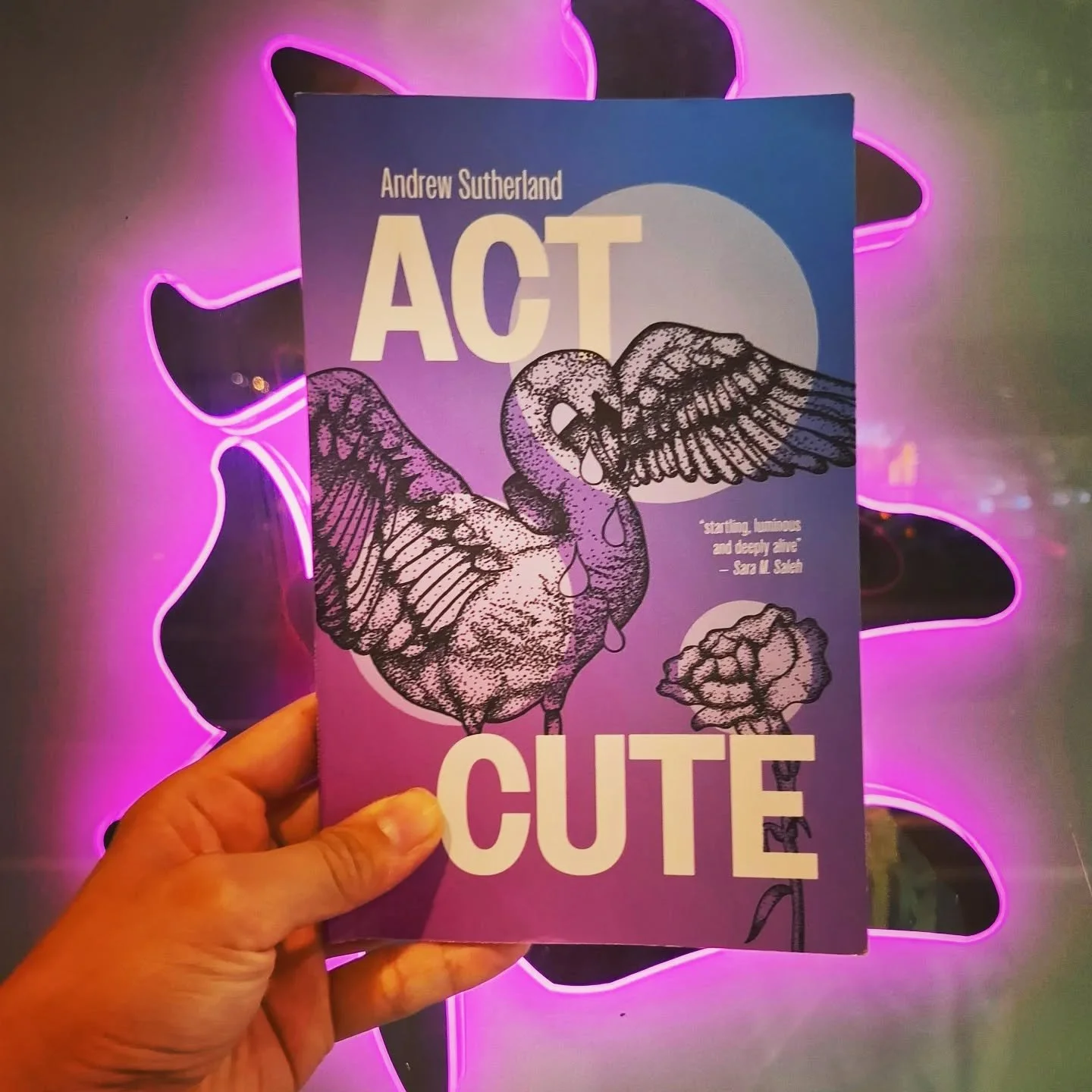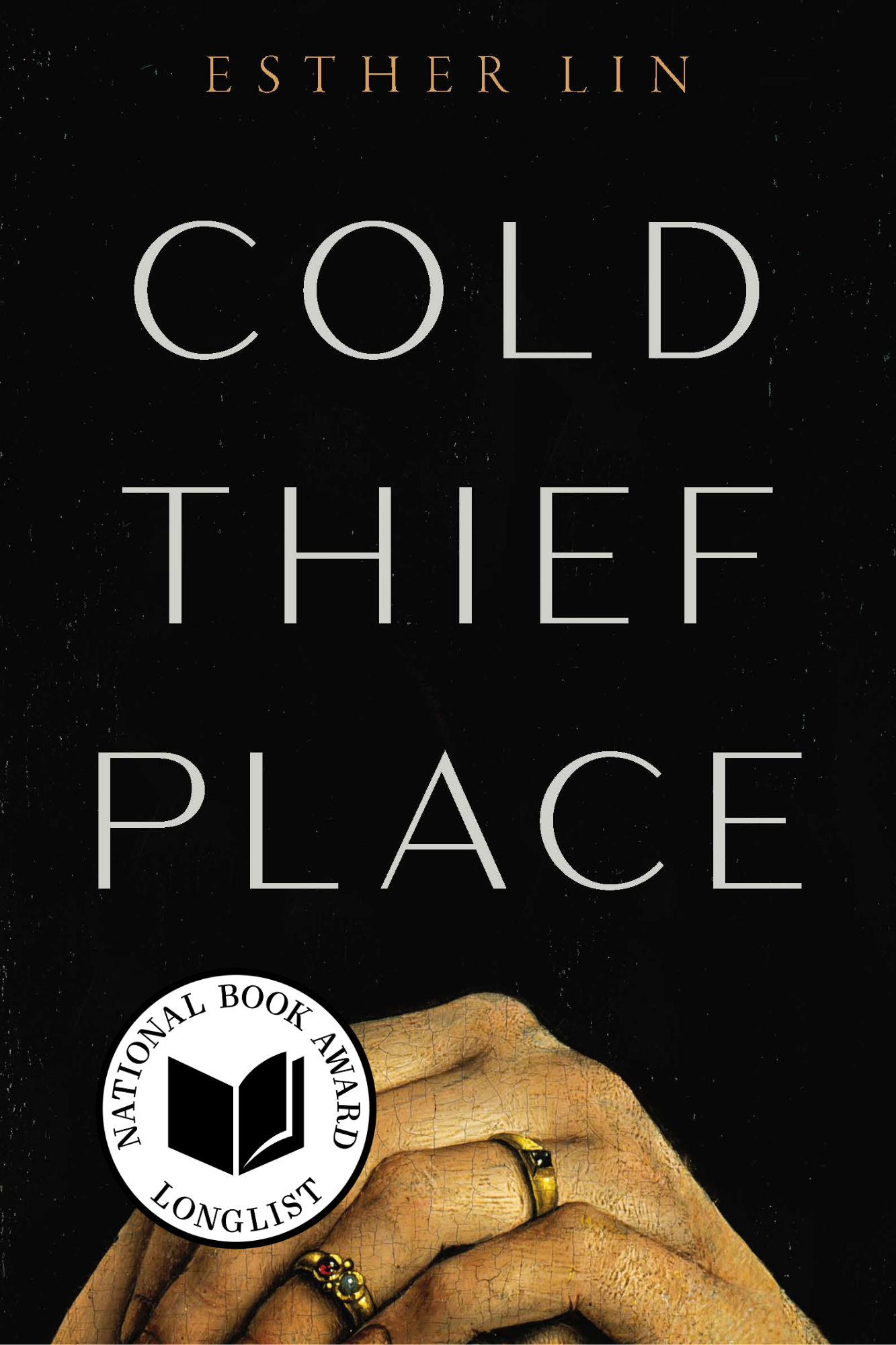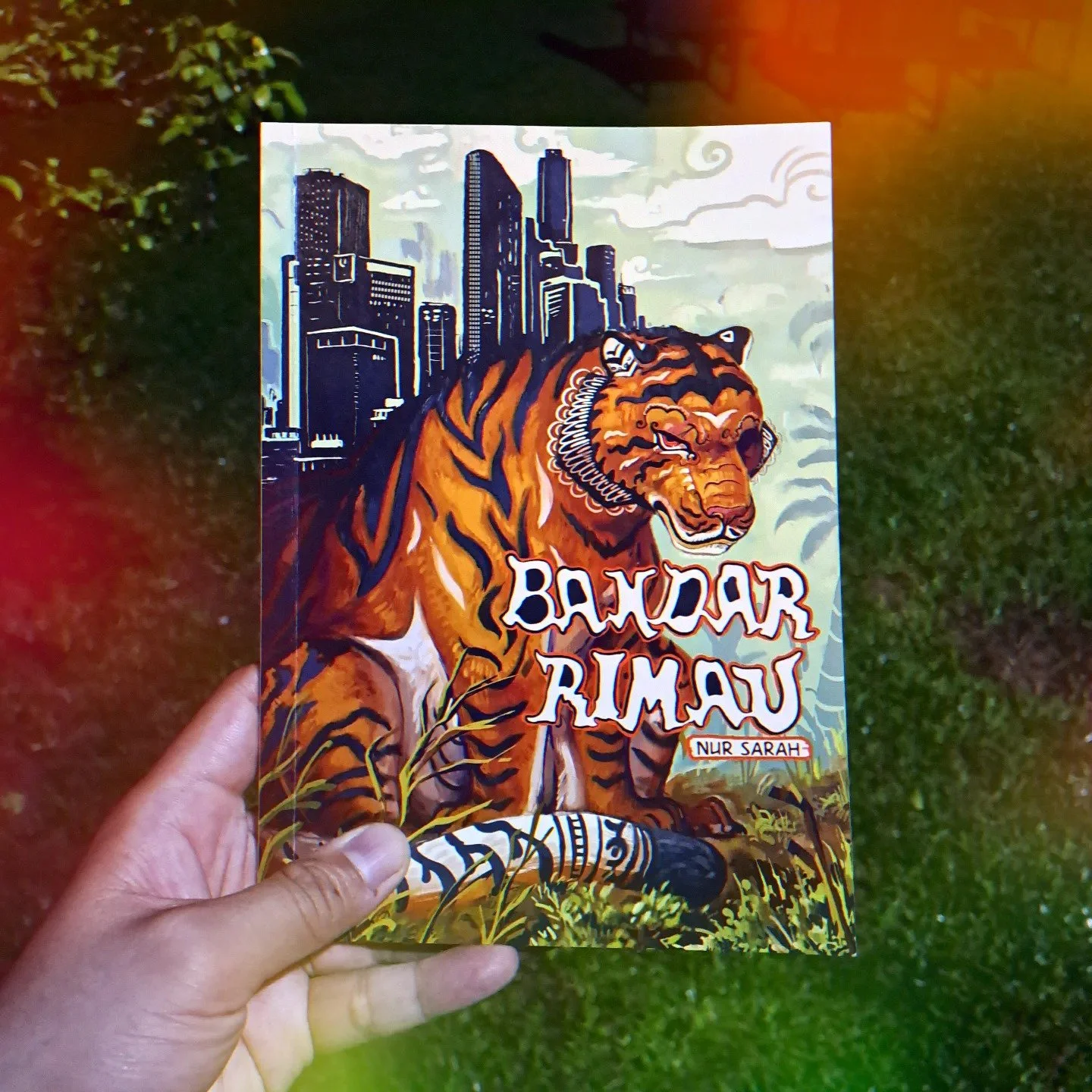In Her Light
Review of In the Same Light: 200 Tang Poems for Our Century by Wong May (UK: Carcanet, 2022)
By Kevin Tsai
If 19th-century metrical renditions made the best Tang authors sound sentimental and unremarkable, 20th-century translations brought about a radical reassessment by foregrounding the imagistic, evocative qualities of Chinese poetry. Translators such as Pound, Rexroth, Williams, and others even inspired new directions in American poetry. Lacking a command of classical Chinese, many relied on a native informant whose words they recast as verse. The 21st century calls for the natives to speak, for poets of Asian descent to address this asymmetrical division of labor. Wong May’s anthology In the Same Light: 200 Tang Poems for Our Century is a welcome contribution, and it should invite us to consider the balance between fidelity and beauty in interpreting another culture.
Apple Of The Hour - Commission of K, Diptych (A pair of artwork), Acrylic on canvas (2022)
Image description: A diptych of abstract paintings with an inky, jade-hued background and splotches of white and darker green patches. Fishes can be seen swimming across the two paintings, replicating an aerial view of a pond.
A translator cannot avoid sounding at least somewhat like herself. An anthology, with multiple voices, amplifies the problem. How does one convey Du Fu's reliance on allusion and unconventional syntax or set Bo Juyi's plain language against Li Shangyin’s thorny diction? In a sense this collection treats not 30+ individual poets, but a particular conception of poetry, for it is hard to distinguish individual voices. In many of these translations, detached, playful lines are often sharply interrupted by notes of emotional depth, creating moments of drama rather than disconnection. Each poem seems to evolve an architecture of its own, often reflecting Wong May’s technique rather than something in the original. Here, as in her own poetry, her style is spare and sensual at the same time. Indeed, it really feels like all these poets are seen In the Same Light. They are all Wong May.
This is not necessarily bad. Wong May’s own poetry favors shorter lines, using line breaks and indents to organize meaning and emotion. In this anthology, she deploys these tools quite effectively to translate a tradition in which meaning often depends on structure. Rather than attempting to convey the structure of the original as does David Hinton or William Carlos Williams, Wong May often creates a new, loose structure that makes visible an organization, if only a local one. Below is an example that illustrates a few structuring principles and their differences in the style of translation. He Zhizhang’s poem on homecoming is a septasyllabic quatrain in which each one of the four lines has a specific function: namely, “begin, continue, turn, and close” (qi cheng zhuan he). Williams’ translation shows this structure well:
Returning after I left my home in childhood,
I have kept my native accent but not the color of my hair.
Facing the smiling children who shyly approach me,
I am asked from where I come.
The quatrain structure invites the reader to consider the situation in the first half in light of the scene in the second half. But Wong May breaks the first two lines, making four lines that suggest some sort of contrast and parallel, losing the quatrain structure and rhythm altogether.
Left home — a young man,
— am yet to lose the accent.
The thinning hair,
Must have made an impression;
Village kids gawk & giggle
Wanting to know where I’m from.
Though this strategy seems to abandon one type of structure, it is inspired by another type. In the original, the first two lines contrast the past with the present in something called an “antithesis,” whereby parts of a line correspond to parts of the other line in a couplet. Below is not a translation, but a glossary for the purpose of illustration.
shao xiao li jia. lao da hui
少 小 離 家 老 大 回
[in youth leaves home] [in maturity returns]
xiang yin wu gai bin mao shuai
鄉 音 無 改 鬢 毛 衰
[accent not changed] [hair at the temples declines]
“In youth leaves home” in line 1 corresponds to “accent not changed” in line 2, and this contrast suggests the stability of identity in spite of the circumstances. “In maturity returns” in line 1 resonates with “hair at the temples declines” in line 2. Such correspondences may seem somewhat arbitrary in English, but in the original Chinese they are very clear and neat in terms of syllable count, position in the line, and often even parts of speech. Wong May’s reorganization cuts short the work of antithesis, in the process deleting a phrase in favor of something she invents.
Apple Of The Hour - To Be Lived, Acrylic on canvas (2021)
Image description: An abstract painting with a gradient background of white, indigo, and dark jade green. On the left side is a dark brown patch with a hint of orange. A light swoop of black, dark emerald green, and white with patches of orange runs across the top middle of the painting towards the bottom right corner.
Remaking the structure, drawing inspiration from ideas she sees in the original, is a strategy Wong May uses throughout. Sometimes the result is amazing. Luo Binwang’s “Goose” seems impossible to translate well because what makes it work is the antithesis, which sounds stifling in English. Wong May breaks it up into a series of stanzas reminiscent of the wake of a goose in a pond and creates the fragmentary lines to do the job of rigid structure.
Indeed, this volume is not shy about making heavy-handed intervention, and there is often a significant gap between the literal meaning and the translation of each line. For example, the final line of Meng Haoran’s “Spring Dawn,” "Who knows how many flowers have fallen?" is rendered "You do not ask / What flowers / There were / What / Still to fall.” This reinvention highlights the question invisible in the literal translation: what is the state of things? Wong May is a “translator traitor,” and although most instances of “betrayal” seem like deliberate choices, occasionally a line surfaces that appears suspect. In Du Fu's famous poem about his war-ravaged homeland, Wong May offers: "Flowers are seen in tears,” which makes one wonder whether jian ("to see") has been confused with its homophone jian (a different character meaning "to splash") in the original. In the larger context a dynamic moment of sensing emotions—splashing a flower with tears—is transformed into something more static. But this could very well be a “purposeful mistake,” as in her translation of Liu Zongyuan’s poem that references one’s inner “nature” (xing), a key concept in Buddhism. Wong May chooses to capitalize it, making it into the thing with trees and mountains (not what xing means), and reinvents the rest of the line to confess her trick: “vanished Nature / May even / Be found back in us.”
Sometimes Wong May fabricates a line outright. The final poem, by the prolific author Anonymous, concludes with a powerful punch: “Ceaseless // Forgive.” Though there is just no trace of it in the original, the poem is better for it. In other words, whether it is a small modification or an invention, she makes it work, and she may even need it for the poem to work because of her aesthetics. Perhaps a good summation of her approach to translation is Li Shangyin’s “Silk Zither,” the final four lines of which she renders as:
High sea. Bright moon.
Pearl-fishers come back up with tears.
Blue fields. Warm sun.
Smoke
Rises
Where
Jade lies buried,
Fat of some land;
Memory
What have you held back?
You do not speak.
Unbidden
The zither gives no notice.
We were clueless then
It’s all that’s left us now.
The first two stanzas begin to suggest a parallel structure, only to devolve into an alternate arrangement where the English is only loosely inspired by the Chinese. The translation tries again at some sort of pattern with “Memory” and “Unbidden,” but again devolves into a spare line— one of the translator’s own inventions here— to conclude the poem. This is not how one would expect to handle the straitjacket form of Li Shangyin’s regulated verse. For comparison, David Young gives
full moon above the ocean
pearls swelling in a sea of tears
the sun grows warm— in indigo pastures
fine jade begins to smoke
love should live on and on
filling our years and memories
but somehow it dazes us, fading,
and we’re not even sure it was real.
What is translated in the two renditions above as “blue fields” or “indigo pastures” refers to a mountain, which is also called Jade Mountain. Both of these names are used in a single line in the original. The scene is just a mountain smoking under the heat of the sun, and not anything surreal as Young’s translation suggests. A third translation, by David Hinton (below), is more grounded in the original. Note that he uses enjambment to avoid the static rigidity that the Chinese form may have in English.
… moonlight on vast seas— it’s pearl’s tear:
far off, Indigo Mountain jade smokes in warm sun: up close,
smoke vanishes: can this feeling linger even in a memory:
never anything but this moment already bewildered and lost.
These three translations offer quite a range of interpretations. Young captures the quiet intensity. Hinton is closest to the Tang poet in structure and meaning, but feels somewhat legato and wordy. Wong May captures the rhythm, energy, and the haunting feeling better. In the Afterword, she speaks of “poetry [arising] independently of words; not what is said, but what it does to you.” Here her translation punches hard in the silence between the lines, and it feels as visceral as Li Shangyin, though by inventing eight lines that would have surprised him. For comparison, the original lines corresponding to the quoted translations are:
滄海月明珠有淚,藍田日暖玉生煙。
此情可待成追憶?只是當時已惘然。
Apple Of The Hour - Can’t Be Timed, Acrylic on canvas (2021)
Image description: An abstract painting with an inky textured background in jade-green hues. Dark, indigo patches are located on the bottom left, bottom right, and top right corners of the painting. The bottom left patch has a cluster of white splotches surrounding it while the top right one has a small orange patch.
In this anthology, there is something that sounds eerily right, and also something that sounds eerily wrong, because Wong May gets things right by being wrong, and wrong by being right. Contemporary readers do not always appreciate the formal beauty, restraint, and allusive labyrinth of classical Chinese poetry, and most translators adopt simpler, less puffed-up language: witness David Young’s approachable Five T’ang Poets (1990). Such avoidance of complexity, combined with Wong May’s creative structure and inventive lines, gives her contemporary translations a different appearance. Scholars will probably not like it. And yet the emotional texture is sometimes just so recognizable: embedded within is a soul renewed for our times. The reader will have to decide for himself at what point the ship of Theseus remains the ship of Theseus, and at what point it ought to be regarded as the creation of the repairman. But perhaps a deeper question is: is it fair that translators of classical Chinese often have to strip away cultural depth, whereas those working on classical Greek and Latin do not have to do so as much?
By contrast to Wong May’s admirable craft, her poem selection leaves something to be desired. Thanks to the outsized influence of the schoolboy anthology 300 Tang Poems (1763), translators of Chinese poetry often focus on a small body of works, giving rise to, say, Nineteen Ways of Looking at Wang Wei (1987) and few ways of looking at the rest of the vast corpus. From the Tang Dynasty alone, there are over 48,900 poems, and it would do Anglophone readers a great service to introduce a more diverse sampling. Many poems in the present anthology are well-known and well-served in existing translations. Perhaps the selection reflects the translator’s sense of kinship with the “migrants and exiles” of the Tang Dynasty as the dedication says, but most of these poets “migrated” or were exiled because they belonged to an elite who might encounter such misfortunes in their government careers. These circumstances are hard to compare to those of today’s economic migrants and refugees.
Finally, In the Same Light does not do enough to help the reader comprehend the context, which can be crucial for poems from another culture and time period. Although the afterword, occupying 100 pages, speaks of the “social-historical context,” readers looking for an introduction to Chinese poetry should search elsewhere. They might consult exemplary guides such as Zong-qi Cai’s How to Read Chinese Poetry (2007), which offers the Chinese characters, transliteration, glossary, literal translation, and scholarly introduction to each genre and analysis of each poem. This anthology’s afterword is creative, playful, idiosyncratic, and not organized, and it should be regarded as a poetic statement combined with notes and thoughts from the writing of the book. For example, it asserts hyperbolically that birds and tears are prevalent in Chinese poetry, but in truth such imagery applies only to a narrow range of works. At times the afterword makes speculations based on incomplete information. Wong May surmises that Tang poets writing in women’s voices could be explained as “gender fluidity” or as a “gallant” defense of the oppressed sex, but such an explanation misses the full picture as these works do follow a long tradition of male writers projecting patriarchal fantasies on women. This is not “gotcha,” but just the recognition that because the afterword is meant for those in the know, it is not useful for the general reader who is unequipped to deduce, say, why the Huang Chao’s massacre in Chang’an “rightly” began with the scholar-officials.
This volume really should have used a copyeditor familiar with Chinese. Below is not an exhaustive list. The names of the poets are sometimes incorrectly and even inconsistently spelled; e.g., Meng Haoran appears as "Meng Hao Ren" (p. 9, Table of Contents) and as "Meng Haran" (p. 299); Luo Binwang appears as "Luo Bin Wang" (TOC) and as "Luo Bingwang" (p. 295). "Du Fu," given in pinyin romanization in the TOC, appears twice as "Tu Fu" (p. 93) in Wade-Giles romanization, giving the impression these are two different people. Sometimes different romanization systems are mixed up in the same word; e.g., the Book of Poetry should be either "Shijing" (pinyin) or "Shih-ching" (W-G), and not a combination of the two ("Shih-Jing," p. 330). The afterword often capitalizes Chinese terms, forgetting that is done in English only for proper names, not for basic words such as "civilization" or "benevolence" (which should be "wenming" and “ren” rather than "Wen-Ming," p. 325, and “Ren,” p. 346). There are also outright mistakes: e.g., "zhu shen" for "chu shen" (p. 303) or "jui-lian" (p. 343) and later "jiu-lian" (p. 344) for "julian." Romanization may seem like a small matter, but such carelessness can really confuse readers. Sometimes historical figures are given names difficult to recognize. Emperor Taizu of Later Liang appears as "Emperor Quangzong" (p. 337) which uses a slightly misspelled version of his given name (Quanzhong, family name Zhu). No Chinese emperor ever went by their given name. There are also regular typographical errors in the afterword.
Quoted Translations:
William Carlos Williams’ translation in The New Directions Anthology of Classical Chinese Poetry, ed. E. Weinberger (New Directions, 2003), p. 60.
David Young, trans. & ed., Five T’ang Poets (Oberlin, 1990), p. 167.
David Hinton, trans. & ed., Classical Chinese Poetry (Farrar, Straus, Giroux, 2008), p. 310.
Note on the audio recordings:
These poems are read in modern Chinese Mandarin pronunciation according to the convention today. But Tang authors would have read the poems in Middle Chinese, which sounds significantly different from its modern descendants.
Kevin Tsai, originally from Taiwan, received his PhD in comparative literature from Princeton University. His research interests include Roman poetry, Tang Dynasty narrative, translation studies, and contemporary film. He is Professor of Chinese at the University of South Alabama, and his best friend is really great at following “sit” and “stay” in English and German.
If you’ve enjoyed reading this article, please consider making a donation. Your donation goes towards paying our contributors and a modest stipend to our editors. Singapore Unbound is powered by volunteers, and we depend on individual supporters. To maintain our independence, we do not seek or accept direct funding from any government.













Ashley Marilynne Wong reviews Ling Ling Huang’s Immaculate Conception.